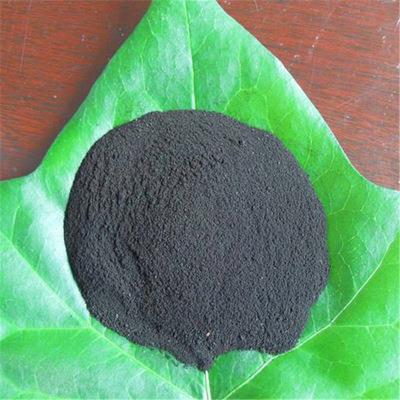
2020-08-06
The earliest application of sodium humate in aquatic products in the aquaculture industry is due to the properties of its fertilizer. Sodium humate is the sodium salt of humic acid, which is a kind of macromolecular organic weak acid.
In shrimp and crab ponds planted with aquatic plants, many technicians will recommend the use of sodium humate when taking relevant measures for the conservation of aquatic plants.
However, many farmers reported that the condition of aquatic plants was worse after use. What happened at this time?
reflecting on issues
After sodium humate is put into the water, the water body will turn black, which will hinder the photosynthesis of aquatic plants and affect the growth of aquatic plants.
At the same time, the growth and reproduction of bacteria and algae will also be affected, resulting in a decrease in dissolved oxygen in the pond, which often leads to a series of hypoxia symptoms in the aquaculture pond.
water action
Sodium humate will agglomerate heavy metals, sulfides and toxic substances in the water to form a poisonous layer at the bottom of the pool.
It often causes the roots of aquatic plants to turn black, and the elegans and bitter grasses cannot grow and split normally. If they are used too much, there will even be rotten roots, broken roots or grass down.
suppress moss
In production practice, after applying sodium humate, the water will turn into soy sauce color, which can block part of sunlight from reaching the bottom layer;
It has a certain effect on inhibiting the growth of moss, and can play a role in preventing moss.
Moss has always been a key control factor in the process of shrimp and crab farming.
In the prevention and control of moss, it is indeed better to use sodium humate to block sunlight than to use moss alone.

photosynthesis
Regarding the statement that sodium humate affects the photosynthesis of aquatic plants, in fact, the shading effect of sodium humate generally lasts for a short time in the water body, more than 1-3 days.
Since many farmers judge the level of product content by comparing the depth of color, they believe that the darker the color, the better.
Therefore, some sodium humate products on the market will add a certain amount of pigment to increase the shading effect and shading time, which will greatly affect the photosynthesis of aquatic plants.
Detoxification Features
The water purification and detoxification functions of sodium humate are also often mentioned features,
The network and porous structure of sodium humate can loosen the soil and improve the permeability of the substrate.
At the same time, the surface has a large negative charge, which can adsorb many metal ions, and can also adsorb some ammonia and hydrogen sulfide in the underlying environment, reducing environmental pollution and deodorizing.
Precautions
However, although sodium humate is safe and efficient, there are some matters needing attention in the use process:
1. Sodium humate is an alkaline substance, be careful not to mix it with drugs that are prohibited for alkaline substances.
2. It is best not to mix with acidic substances in the application process of sodium humate, especially organic acid products.
3. Studies have shown that sodium humate has a certain inhibitory effect on Lactobacillus plantarum, but adding 2 percent of sodium humate will stimulate the growth of Lactobacillus plantarum, and further research needs to be done.
4. It is recommended to dissolve in fresh water before use.